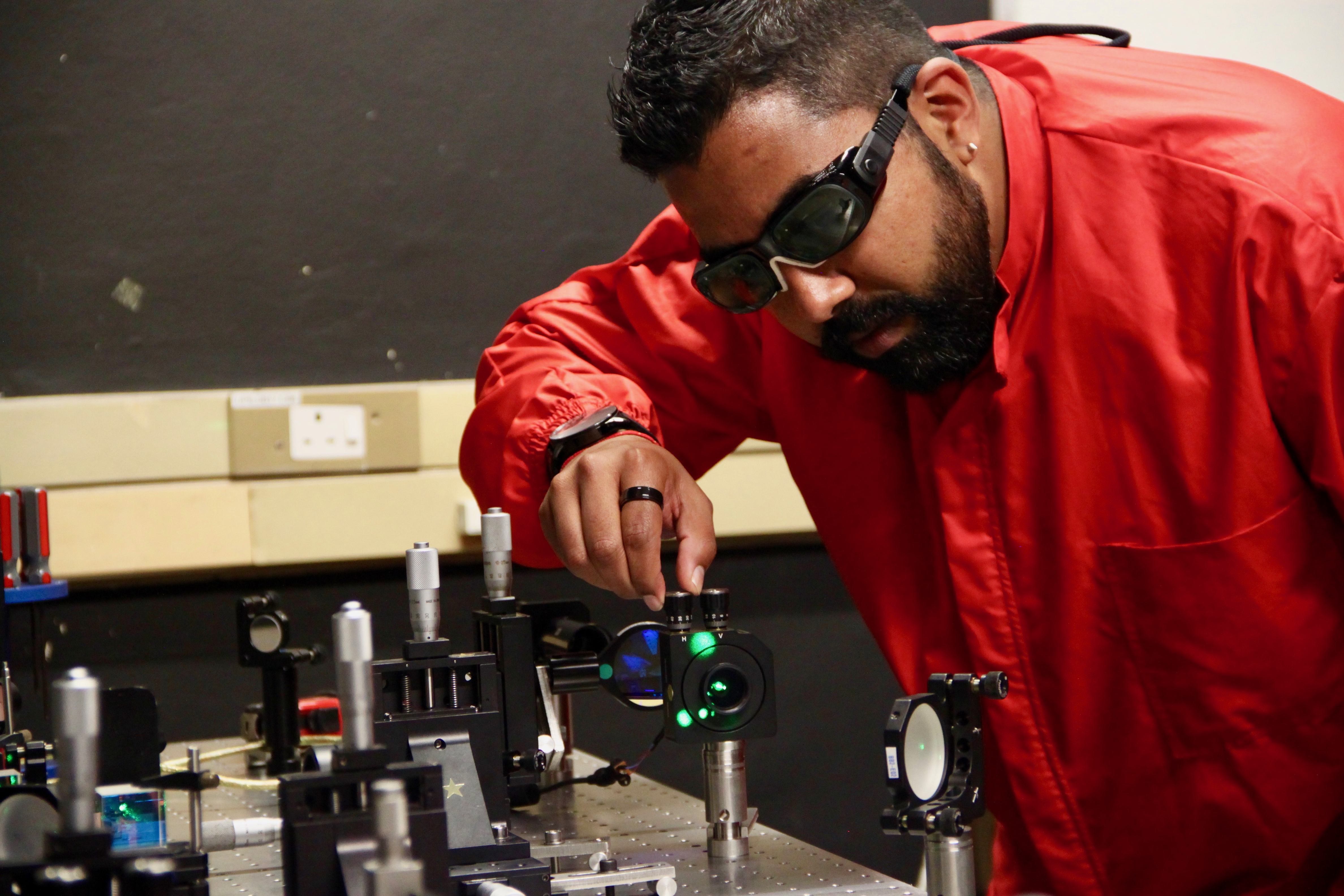CSIR researcher cracks unconventional method to enhance the brightness of solid-state lasers

A journal paper titled Brightness Enhancement in a Solid State Laser by mode of Transformation by the CSIR’s Dr Darryl Naidoo, has been published in the Optical Society’s high impact journal Optica. His published work formed part of his PhD studies in which the research idea was developed by Prof. Andrew Forbes of the University of the Witwatersrand and theoretically developed by his CSIR colleague, Dr Igor Litvin.
A journal paper titled Brightness Enhancement in a Solid State Laser by mode of Transformation by the CSIR’s Dr Darryl Naidoo, has been published in the Optical Society’s high impact journal Optica. His published work formed part of his PhD studies in which the research idea was developed by Prof. Andrew Forbes of the University of the Witwatersrand and theoretically developed by his CSIR colleague, Dr Igor Litvin.
“We took an interest in this research work because according to conventional standards, it is not possible for a solid-state laser to simultaneously maximise both the mode quality and mode energy and therefore, brightness cannot be optimised. We were determined to demonstrate that this is possible if an intra-cavity laser beam shaping method was used,” says CSIR senior researcher Darryl Naidoo.
The brightness of a laser is an important characteristic that defines the potential of a laser beam to transmit high energies over long distances. Usually, to achieve this, one is required to maximise energy from a laser while maintaining a good quality laser mode. These two critical factors need to be taken into consideration for the desired output. Since the laser mode is the same everywhere in solid-state laser cavities, achieving both parameters is not trivial. In the pursuit of high power, the quality of the laser mode often declines and ultimately decreases the brightness. Similarly, by optimising a laser for a good quality mode, the output power decreases, which results in a degradation of the brightness.
The CSIR, in collaboration with the University of the Witwatersrand, did the unconventional by using laser beam shaping via two optical components internal to a laser to transform a good quality laser mode into a mode that is optimised for energy extraction and back again. As a result, the mode inside the laser was now not the same, thus enabling both parameters to be achieved. In this work, the team demonstrated an enhancement of the brightness of an off-the-shelf commercial laser by 350%.
Dr Naidoo, who was responsible for the experimental realisation of the concept both external and internal to the laser and simulating the profiles of the optical components, explains: “External to a laser, the concept was tested on a spatial light modulator where the corresponding designs were used to manufacture optical components for use inside a laser cavity.” His biggest challenge was handling the optical components inside the laser as each component had four degrees of freedom. As a result, this made the system difficult to construct and manipulate.
The envisaged impact of the research is to break away from the conventional design approach that indicates that a laser mode inside a solid-state laser cavity is one particular beam.
“This work explored a novel approach to mode selection in solid-state lasers that now gives allowance for geometrical adaptation. Additionally, this method serves as a general approach for optimising laser brightness, which will be especially useful for slab laser configurations,” says Naidoo.
Working on a project that has managed to produce sustainable results has been an absolute honour. I was even more pleased to learn that the work was going to be published,” concludes Naidoo.


